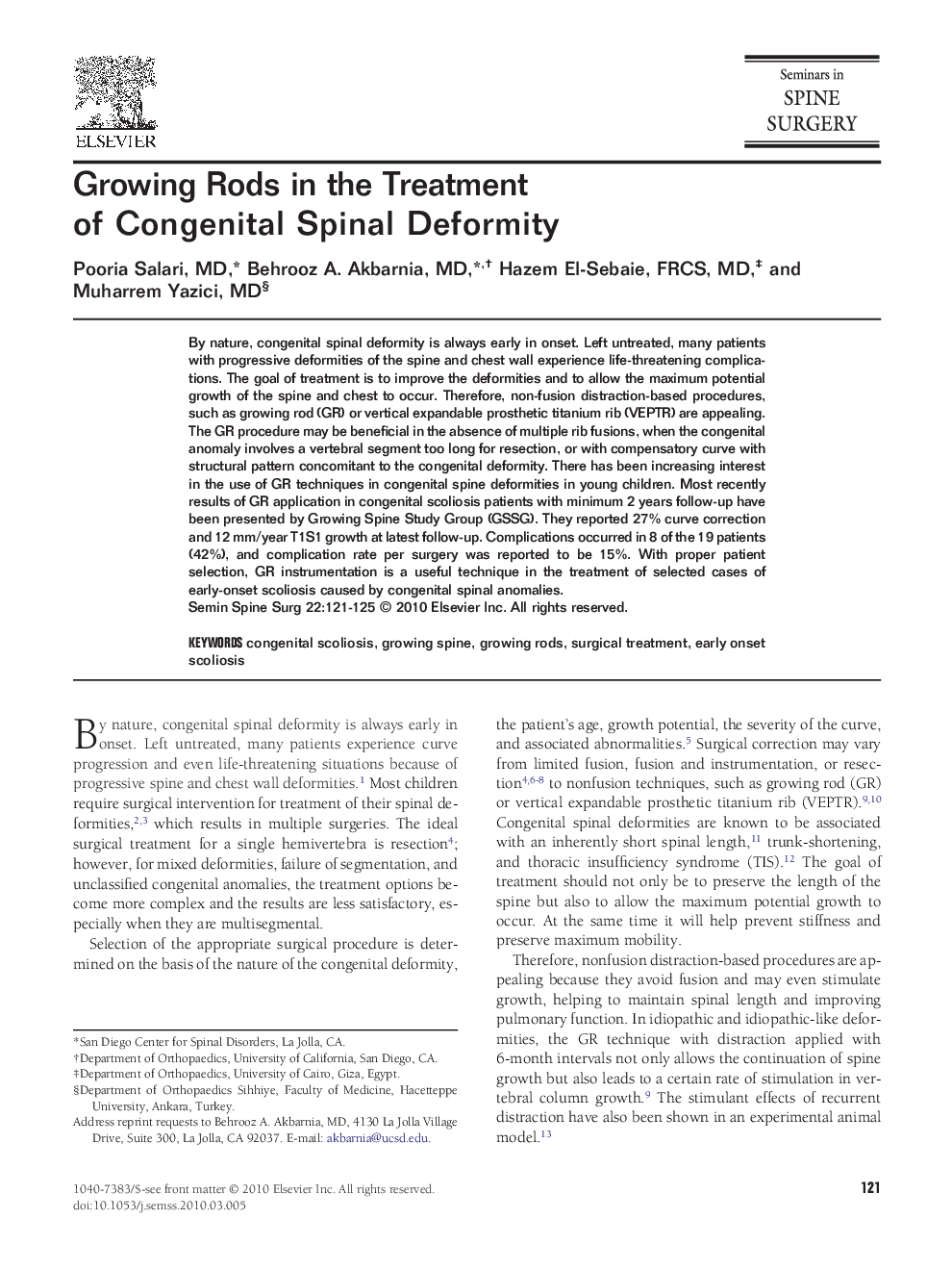| Article ID | Journal | Published Year | Pages | File Type |
|---|---|---|---|---|
| 4094986 | Seminars in Spine Surgery | 2010 | 5 Pages |
By nature, congenital spinal deformity is always early in onset. Left untreated, many patients with progressive deformities of the spine and chest wall experience life-threatening complications. The goal of treatment is to improve the deformities and to allow the maximum potential growth of the spine and chest to occur. Therefore, non-fusion distraction-based procedures, such as growing rod (GR) or vertical expandable prosthetic titanium rib (VEPTR) are appealing. The GR procedure may be beneficial in the absence of multiple rib fusions, when the congenital anomaly involves a vertebral segment too long for resection, or with compensatory curve with structural pattern concomitant to the congenital deformity. There has been increasing interest in the use of GR techniques in congenital spine deformities in young children. Most recently results of GR application in congenital scoliosis patients with minimum 2 years follow-up have been presented by Growing Spine Study Group (GSSG). They reported 27% curve correction and 12 mm/year T1S1 growth at latest follow-up. Complications occurred in 8 of the 19 patients (42%), and complication rate per surgery was reported to be 15%. With proper patient selection, GR instrumentation is a useful technique in the treatment of selected cases of early-onset scoliosis caused by congenital spinal anomalies.
